-
 Bitcoin
Bitcoin $106,754.6083
1.33% -
 Ethereum
Ethereum $2,625.8249
3.80% -
 Tether USDt
Tether USDt $1.0001
-0.03% -
 XRP
XRP $2.1891
1.67% -
 BNB
BNB $654.5220
0.66% -
 Solana
Solana $156.9428
7.28% -
 USDC
USDC $0.9998
0.00% -
 Dogecoin
Dogecoin $0.1780
1.14% -
 TRON
TRON $0.2706
-0.16% -
 Cardano
Cardano $0.6470
2.77% -
 Hyperliquid
Hyperliquid $44.6467
10.24% -
 Sui
Sui $3.1128
3.86% -
 Bitcoin Cash
Bitcoin Cash $455.7646
3.00% -
 Chainlink
Chainlink $13.6858
4.08% -
 UNUS SED LEO
UNUS SED LEO $9.2682
0.21% -
 Avalanche
Avalanche $19.7433
3.79% -
 Stellar
Stellar $0.2616
1.64% -
 Toncoin
Toncoin $3.0222
2.19% -
 Shiba Inu
Shiba Inu $0.0...01220
1.49% -
 Hedera
Hedera $0.1580
2.75% -
 Litecoin
Litecoin $87.4964
2.29% -
 Polkadot
Polkadot $3.8958
3.05% -
 Ethena USDe
Ethena USDe $1.0000
-0.04% -
 Monero
Monero $317.2263
0.26% -
 Bitget Token
Bitget Token $4.5985
1.68% -
 Dai
Dai $0.9999
0.00% -
 Pepe
Pepe $0.0...01140
2.44% -
 Uniswap
Uniswap $7.6065
5.29% -
 Pi
Pi $0.6042
-2.00% -
 Aave
Aave $289.6343
6.02%
Binance contract margin description: Analysis of the difference between full position and position-by-position mode
Binance offers full position and position-by-position margin modes, impacting margin efficiency and risk management for futures and options trading.
May 28, 2025 at 10:50 am

Introduction to Binance Contract Margin
Binance, one of the leading cryptocurrency exchanges, offers a variety of trading options, including futures and options contracts. Understanding the margin modes is crucial for traders looking to maximize their potential returns while managing risk effectively. In this article, we will delve into the specifics of the full position margin mode and the position-by-position margin mode, analyzing their key differences and how they impact trading strategies.
Full Position Margin Mode Explained
The full position margin mode on Binance is designed to treat all open positions as a single entity for the purpose of margin calculations. This means that the margin required to maintain all positions is calculated based on the total exposure across all contracts.
In this mode, if a trader has multiple positions in different contracts, the margin required will be the sum of the margins needed for each position, but calculated as if they were part of a single position. This can lead to more efficient use of margin when the positions are correlated, as the net exposure is considered rather than the gross exposure.
Position-by-Position Margin Mode Explained
In contrast, the position-by-position margin mode calculates the margin requirement for each individual position separately. Each contract's margin requirement is calculated independently, and the total margin required is the sum of these individual calculations.
This mode can be beneficial for traders who wish to isolate the risk of each position. By treating each position separately, traders can more easily manage the risk associated with each contract without the performance of one position affecting the margin requirements of others.
Key Differences Between Full Position and Position-by-Position Margin Modes
The primary difference between these two margin modes lies in how they handle the calculation of margin requirements. Full position margin mode aggregates all positions for margin calculation, potentially leading to more efficient use of margin when positions are correlated. On the other hand, position-by-position margin mode isolates each position, allowing for more granular control over risk management.
Another significant difference is the impact on liquidation risk. In full position mode, a loss in one position could affect the margin available for all other positions, potentially leading to a higher risk of liquidation across the board. In position-by-position mode, the risk of liquidation is isolated to each position, reducing the potential for a domino effect.
Choosing the Right Margin Mode for Your Trading Strategy
Selecting the appropriate margin mode depends on a trader's specific strategy and risk tolerance. Full position margin mode is often preferred by traders who engage in hedging or who have correlated positions, as it can lead to more efficient use of margin. This mode is beneficial for those who want to manage their overall exposure as a single portfolio.
Conversely, position-by-position margin mode is ideal for traders who want to manage each position independently. This mode is suitable for those who engage in diverse trading strategies across different contracts and wish to isolate the risk associated with each position.
Practical Example of Margin Calculation in Both Modes
To illustrate the difference between these margin modes, let's consider a practical example. Suppose a trader has two positions: a long position in BTC/USDT futures and a short position in ETH/USDT futures.
Full Position Margin Mode: The margin required will be calculated based on the net exposure of both positions. If the long BTC position and the short ETH position are correlated (e.g., BTC and ETH prices move in the same direction), the net exposure might be lower, leading to a lower total margin requirement.
Position-by-Position Margin Mode: The margin required will be the sum of the margins needed for the BTC/USDT position and the ETH/USDT position, calculated independently. If the positions are not correlated, this mode could result in a higher total margin requirement compared to the full position mode.
How to Switch Between Margin Modes on Binance
Switching between margin modes on Binance is a straightforward process. Here's how to do it:
- Log in to your Binance account and navigate to the futures trading section.
- Select the contract for which you want to change the margin mode.
- Click on the "Position Mode" button located at the top of the trading interface.
- Choose between "One-way Mode" (full position) and "Hedge Mode" (position-by-position).
- Confirm your selection to apply the new margin mode.
Frequently Asked Questions
Q1: Can I switch margin modes while I have open positions?
A1: Yes, you can switch between full position and position-by-position margin modes even with open positions. However, be aware that changing the margin mode may affect your margin requirements and potentially trigger liquidations if the new mode requires more margin than is currently available.
Q2: Are there any fees associated with switching margin modes?
A2: Binance does not charge any fees for switching between margin modes. However, traders should be mindful of potential changes in margin requirements that could affect their positions.
Q3: How does the choice of margin mode affect my overall trading performance?
A3: The choice of margin mode can significantly impact your trading performance. Full position mode can lead to more efficient use of margin and potentially higher returns if positions are correlated. Position-by-position mode offers better risk isolation, which can protect your portfolio from cascading liquidations but may require more margin overall.
Q4: Can I use different margin modes for different contracts on Binance?
A4: Yes, Binance allows you to set different margin modes for different contracts. This flexibility enables you to tailor your trading strategy to the specific needs of each contract you are trading.
Disclaimer:info@kdj.com
The information provided is not trading advice. kdj.com does not assume any responsibility for any investments made based on the information provided in this article. Cryptocurrencies are highly volatile and it is highly recommended that you invest with caution after thorough research!
If you believe that the content used on this website infringes your copyright, please contact us immediately (info@kdj.com) and we will delete it promptly.
- 2025-W Uncirculated American Gold Eagle and Dr. Vera Rubin Quarter Mark New Products
- 2025-06-13 06:25:13
- Ruvi AI (RVU) Leverages Blockchain and Artificial Intelligence to Disrupt Marketing, Entertainment, and Finance
- 2025-06-13 07:05:12
- H100 Group AB Raises 101 Million SEK (Approximately $10.6 Million) to Bolster Bitcoin Reserves
- 2025-06-13 06:25:13
- Galaxy Digital CEO Mike Novogratz Says Bitcoin Will Replace Gold and Go to $1,000,000
- 2025-06-13 06:45:13
- Trust Wallet Token (TWT) Price Drops 5.7% as RWA Integration Plans Ignite Excitement
- 2025-06-13 06:45:13
- Ethereum (ETH) Is in the Second Phase of a Three-Stage Market Cycle
- 2025-06-13 07:25:13
Related knowledge
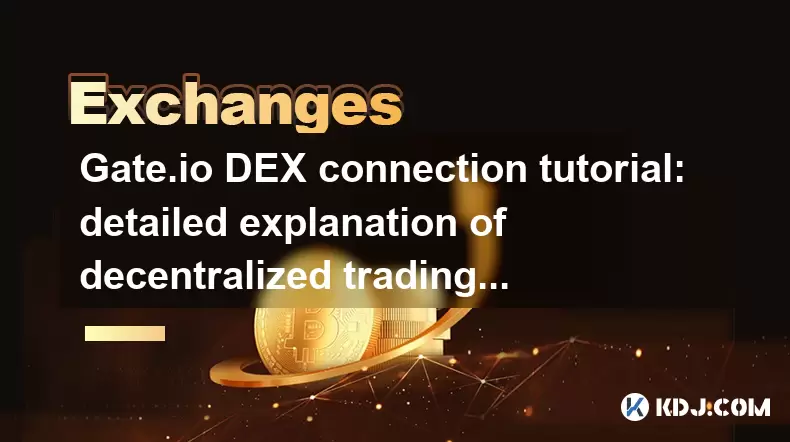
Gate.io DEX connection tutorial: detailed explanation of decentralized trading operation steps
Jun 12,2025 at 08:04pm
Connecting to Gate.io DEX: Understanding the BasicsBefore diving into the operational steps, it is crucial to understand what Gate.io DEX is and how it differs from centralized exchanges. Unlike traditional platforms where a central authority manages user funds and trades, Gate.io DEX operates on blockchain technology, allowing users to trade directly f...
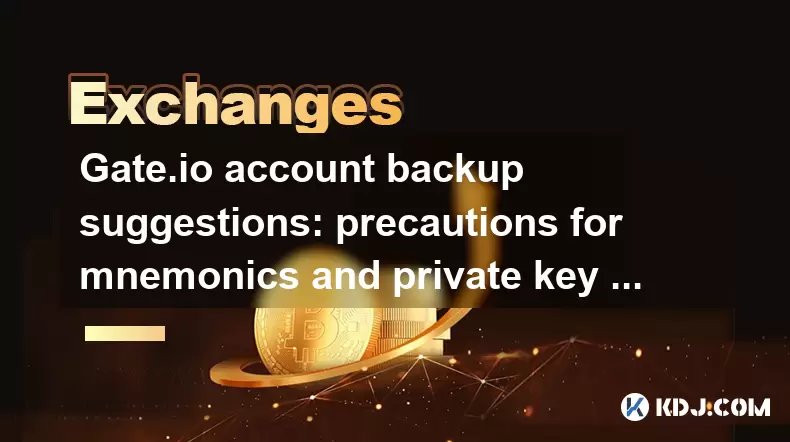
Gate.io account backup suggestions: precautions for mnemonics and private key storage
Jun 12,2025 at 10:56am
Understanding the Importance of Mnemonics and Private KeysIn the world of cryptocurrency, mnemonics and private keys are the core elements that grant users ownership over their digital assets. When using Gate.io or any other crypto exchange, understanding how to securely manage these components is crucial. A mnemonic phrase typically consists of 12 or 2...
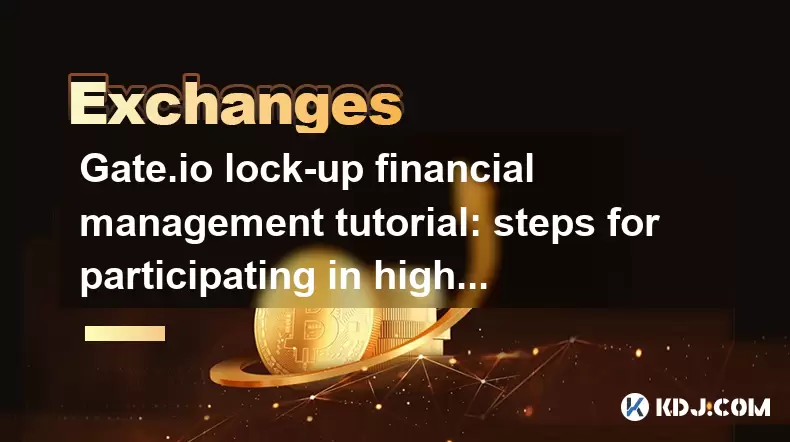
Gate.io lock-up financial management tutorial: steps for participating in high-yield projects and redemption
Jun 13,2025 at 12:43am
What Is Gate.io Lock-Up Financial Management?Gate.io is one of the world’s leading cryptocurrency exchanges, offering users a variety of financial products. Lock-up financial management refers to a type of investment product where users deposit their digital assets for a fixed period in exchange for interest or yield. These products are designed to prov...
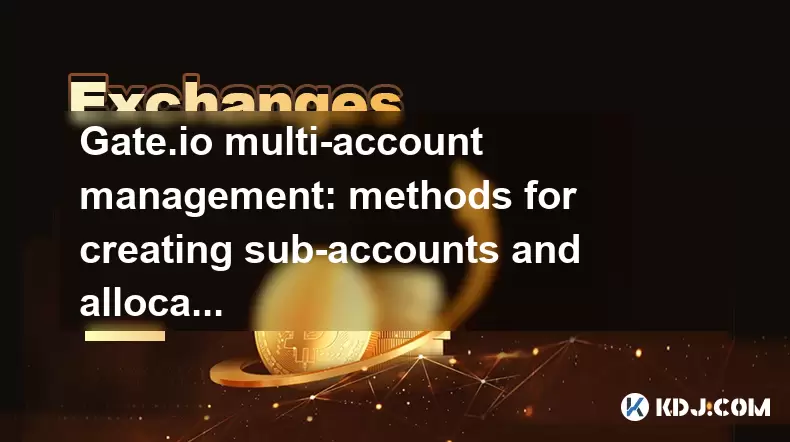
Gate.io multi-account management: methods for creating sub-accounts and allocating permissions
Jun 15,2025 at 03:42am
Creating Sub-Accounts on Gate.ioGate.io provides users with a robust multi-account management system that allows for the creation of sub-accounts under a main account. This feature is particularly useful for traders managing multiple portfolios or teams handling shared funds. To create a sub-account, log in to your Gate.io account and navigate to the 'S...
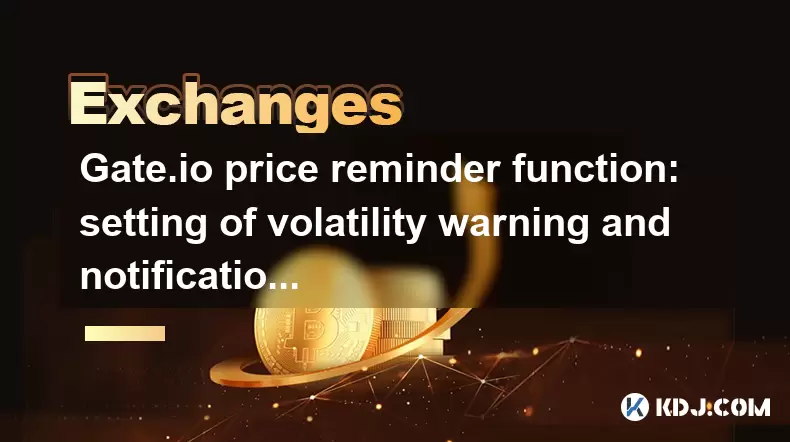
Gate.io price reminder function: setting of volatility warning and notification method
Jun 14,2025 at 06:35pm
What is the Gate.io Price Reminder Function?The Gate.io price reminder function allows users to set up custom price alerts for specific cryptocurrencies. This feature enables traders and investors to stay informed about significant price changes without constantly monitoring market data. Whether you're tracking a potential buy or sell opportunity, the p...

Gate.io trading pair management: tutorials on adding and deleting watchlists
Jun 16,2025 at 05:42am
What Is a Watchlist on Gate.io?A watchlist on Gate.io is a customizable feature that allows traders to monitor specific trading pairs without actively engaging in trades. This tool is particularly useful for users who want to track the performance of certain cryptocurrencies or trading pairs, such as BTC/USDT or ETH/BTC. By organizing frequently watched...

Gate.io DEX connection tutorial: detailed explanation of decentralized trading operation steps
Jun 12,2025 at 08:04pm
Connecting to Gate.io DEX: Understanding the BasicsBefore diving into the operational steps, it is crucial to understand what Gate.io DEX is and how it differs from centralized exchanges. Unlike traditional platforms where a central authority manages user funds and trades, Gate.io DEX operates on blockchain technology, allowing users to trade directly f...

Gate.io account backup suggestions: precautions for mnemonics and private key storage
Jun 12,2025 at 10:56am
Understanding the Importance of Mnemonics and Private KeysIn the world of cryptocurrency, mnemonics and private keys are the core elements that grant users ownership over their digital assets. When using Gate.io or any other crypto exchange, understanding how to securely manage these components is crucial. A mnemonic phrase typically consists of 12 or 2...

Gate.io lock-up financial management tutorial: steps for participating in high-yield projects and redemption
Jun 13,2025 at 12:43am
What Is Gate.io Lock-Up Financial Management?Gate.io is one of the world’s leading cryptocurrency exchanges, offering users a variety of financial products. Lock-up financial management refers to a type of investment product where users deposit their digital assets for a fixed period in exchange for interest or yield. These products are designed to prov...

Gate.io multi-account management: methods for creating sub-accounts and allocating permissions
Jun 15,2025 at 03:42am
Creating Sub-Accounts on Gate.ioGate.io provides users with a robust multi-account management system that allows for the creation of sub-accounts under a main account. This feature is particularly useful for traders managing multiple portfolios or teams handling shared funds. To create a sub-account, log in to your Gate.io account and navigate to the 'S...

Gate.io price reminder function: setting of volatility warning and notification method
Jun 14,2025 at 06:35pm
What is the Gate.io Price Reminder Function?The Gate.io price reminder function allows users to set up custom price alerts for specific cryptocurrencies. This feature enables traders and investors to stay informed about significant price changes without constantly monitoring market data. Whether you're tracking a potential buy or sell opportunity, the p...

Gate.io trading pair management: tutorials on adding and deleting watchlists
Jun 16,2025 at 05:42am
What Is a Watchlist on Gate.io?A watchlist on Gate.io is a customizable feature that allows traders to monitor specific trading pairs without actively engaging in trades. This tool is particularly useful for users who want to track the performance of certain cryptocurrencies or trading pairs, such as BTC/USDT or ETH/BTC. By organizing frequently watched...
See all articles

























































































